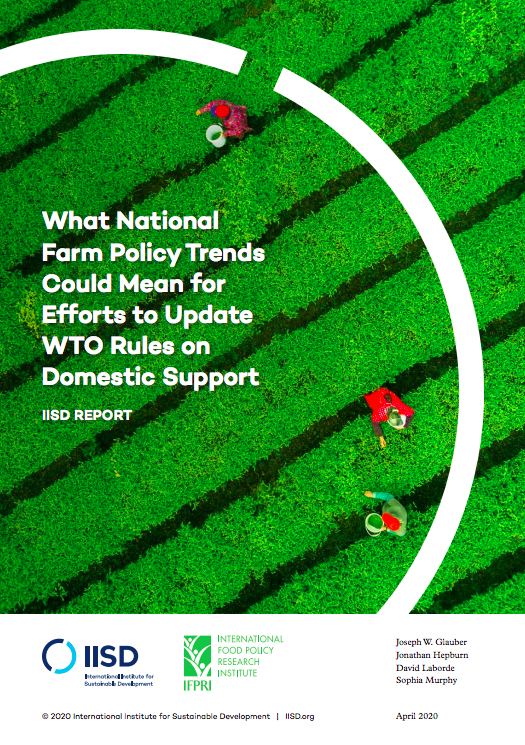What National Farm Policy Trends Could Mean for Efforts to Update WTO Rules on Domestic Support

DESCRIPTION
Global trade rules on the support governments can provide to their farm sectors need urgent reform if countries are to make progress on Agenda 2030—and in particular on Sustainable Development Goal 2, which aims to end hunger and malnutrition, achieve food security, and promote sustainable agriculture. Trade rules must balance the need to ensure that domestic support does not harm producers elsewhere with the need to increase public investment in agriculture and food systems. With the coronavirus pandemic and climate-related volatility affecting global markets, improved rules on domestic support would also help improve stability and predictability in the global food system.
This report looks in detail at agricultural support in a cross-section of the World Trade Organization (WTO) membership. It examines how this support relates to public policy goals, the type of domestic support instruments chosen, and countries’ current WTO limits on support.
It proposes simplifying domestic support rules by allowing countries to provide a certain minimal level of trade-distorting support based on a percentage of the value of production. It also makes the case for much stronger transparency requirements on government notifications. Specifically, the report recommends:
- New overall limits on domestic support that can harm producers in other countries, which are gradually cut over time. The aim is to redress inequalities among countries and harmonize support levels in the future. The new limits would be tied to an objective measurement of support as a share of agricultural output that reflects current market and policy realities, rather than using fixed levels that reflect past support.
- By providing special and differential treatment to developing countries that require it, negotiators would provide those WTO members with a longer phase-in period, a higher initial cap, or both.
- Limits on how much support can be focused on any one commodity, including agreement on product categories.
- Food bought at administered prices fixed by governments under public stockholding programs will not count toward domestic support limits when the administered price is below an agreed international market price.